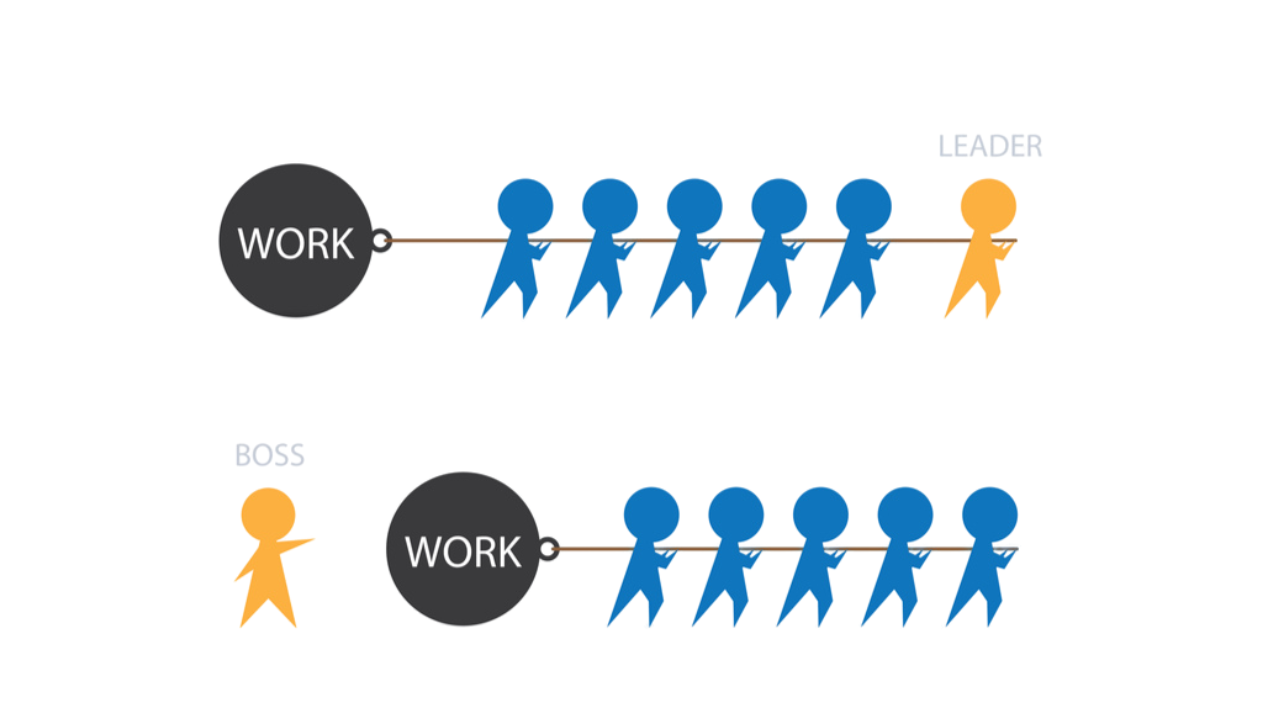“Report to your boss”, “Manager didn’t approve your leave”, “The leaders are changing the trajectory of the organisation”.
If you’re in corporate, a tech firm or a startup, you would have heard similar sentences and known the roles: Leader, manager and boss. Sounds the same and are used interchangeably, but you’re curious to know what the difference is between leaders vs managers vs boss. So let’s look into it today.

Who is a leader?
Leaders are the ones who define the vision and the long-term agenda of an organisation. They focus on team-building and the long-term mission of the company.
Leaders empower, inspire, and uplift their team to achieve their mission. They ensure their team is aligned with the goal, purpose and values of the company. They empower every person in their team and bring the best out of them.

Who is a manager?
If the leader is the person who defines the vision, then the manager is the person who brings that vision to life. Managers take the resources at hand and create plans, set up systems and processes and manage people to get the tasks done. They are involved in the day-to-day work.
Since the managers are focused on completing projects, their attention is on short-term goals and missions.

Who is a boss?
Unlike leaders and managers, a boss isn’t a title or a position. It’s a term that revolves around authority, supervision and power. Mostly considered negatively and associated with control and micromanagement.
Anyone who is in charge of something and is above you in hierarchy can be a boss. Someone you report to, someone who manages you.

I know the word “boss” instantly brings power, control and micromanagement to our minds. But it’s not a negative word. It’s a neutral term that just means someone who has formal authority above you, but it can go either way. When a boss exerts their power, doesn’t listen to their team and expects their orders to be completed with no questions asked, that’s the toxic boss behaviour.
Difference between a leader, a manager and a boss
| Leader | Manager | Boss | |
| Focus | Long-term vision and people | Short-term goals and tasks | Outcome |
| Approach | Motivates and inspires | Collaborates and uses systems and processes | Direction and authority |
| Team collaboration | Invests in their team | Manages the team | Formal and task-focused |
| Communication | Uplifting and empowering | Instructional | Final verdict |
| Responsibilities | Long-term planning and decision making, team-building and coaching | Involved in the hands-on work and manages their team | Usually not involved in the hands-on work |
Can one person wear more than one hat?
Short answer, yes. Long answer, it’s complicated.
Let’s talk about leadership first. Though there are official positions, leadership is not limited to a title. Your manager or a team member can have leadership qualities and might be seen as an unofficial leader. Or think of a person you or your team turns to for guidance and advice. That’s leadership without a title. It is a bunch of soft and interpersonal skills; anyone who demonstrates these skills can be seen as a leader.
Check out: How to build leadership skills
Similarly, a boss is not a position. It’s a place of authority and supervision, and anyone can have that. Your leader, manager, a team lead, head of the department or anyone having the power and authority to have a final say is a boss.
But can someone officially play all roles?
Yes. Every manager needs enough leadership skills to coordinate and keep their team’s morale high. And every leader needs basic management to keep things moving.
In smaller teams or fast-paced environments, it’s common for one person to wear multiple hats. A manager might have to step up and be the visionary leader of the organisation. A CEO might have to be involved in everyday work and team management.
A founder might lead with vision, manage day-to-day operations, and still be seen as “the boss” by their team. It’s fine to play more than one role, but it’s important to understand the difference to switch up at the right time.
The catch
But there’s a limit. Trying to do it all, all the time, comes at a cost. Leadership and management pull in different directions. Leadership looks ahead; management focuses on the now.
Switching between these two without a proper understanding of the roles and having boundaries results in burnout and blurred priorities. This also confuses the team members, and the culture suffers. The art is to know which role to step into and when to step back.
Leaders vs Managers vs Boss: Why it matters to you?
The way you lead, manage, or boss shapes everything from your team’s coordination to the company’s long-term vision.
If you’re someone aiming for leadership or C-suite roles, knowing the difference between leaders vs managers vs boss is crucial. Each role requires a different set of skills, priorities, and mindsets.
- Leaders set a vision and inspire action.
- Managers turn that vision into action.
- Bosses rely on authority (for better or worse).
If you don’t understand the difference, you end up sending mixed signals, losing credibility, or burning yourself out trying to be everything at once. Knowing the difference helps you set your career path and be headstrong about your direction.
If you’re leaning towards leadership but not sure if it’s right for you, take this quick 5-minute leadership assessment to help you see where you stand and what your next step should be.
And if leadership is the role you want, you need to start building skills and prepare for the position you want. My 8-week data leadership mentorship program helps data professionals like you to transition from technical roles to leadership with confidence, the right skills and mindset.









